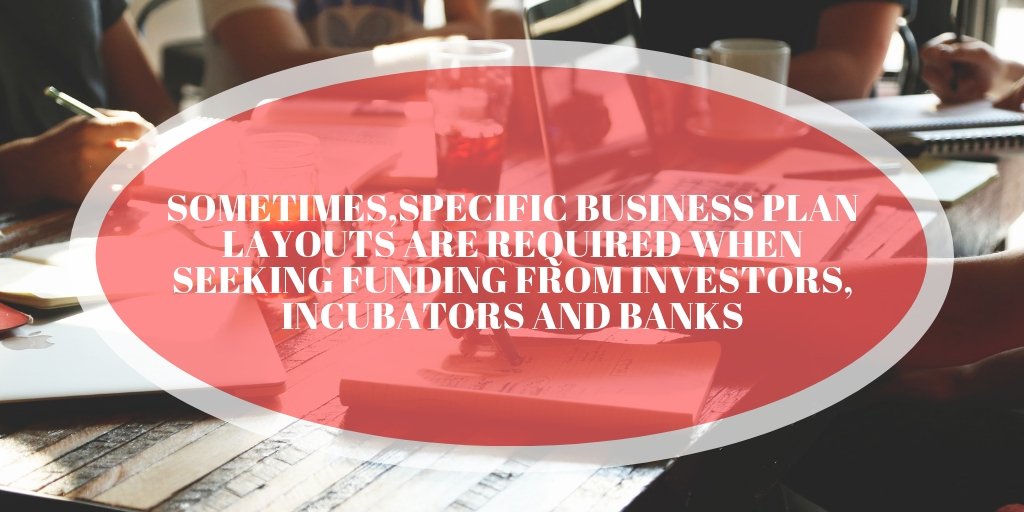When it comes to launching an app startup, having a strong mobile app business plan is important. In the beginning, an app startup business plan helps you plot out your ideas and view your business across several perspectives. During the funding stage, having a business plan becomes a key piece in showcasing the details of your app startup to investors. Writing a business plan can seem difficult – there are many factors to consider and it isn’t easy turning it all into one cohesive strategy. A Google search on business plans pulls up a million different opinions, and 5,000 different templates. Selecting which is the “right” template to use can prove to be tricky, and taking the wrong advice can prove harmful to your funding efforts.
Here at ThinkLions, we’ve written hundreds of mobile app business plans and have worked with entrepreneurs across the world to develop strategies that have raised millions of dollars in seed funding. If it’s one thing we know, it’s business plans for apps – and we want to teach you everything there is to know! While it would take us years to write up everything we have learned over our many years of business, in this post, we’ll give you some really awesome tips to help you draft the perfect mobile app business plan.
Do I Need A Mobile App Business Plan?
While opinions vary on whether app startups need business plans, in our experience, it’s always useful. In essence, a business plan will effectively present your app idea and tie together multiple operational elements to create the story of how your business will grow from an idea to success. Business plans come in handy across many situations when trying to present your app idea to another person. Here are a few examples of previous clients who were definitely happy that they went through the mobile app business planning process:
- James was a solo entrepreneur when he asked us to write his app idea business plan. When he hired us for business planning services, his goal was to submit his business plan to a local startup incubator that would help grow his business. The incubator rejected him because they only accepted teams with two or more founders. James was later introduced to an interested tech-entrepreneur who already had two mobile applications launched in the market. Chris, the entrepreneur, was interested in James’ idea and asked him for his business plan so he could understand it better. Luckily for him, James already had one handy. James never made it to the incubator; instead, Chris partnered with him 50/50 and funded the launch of his app idea!
- An app startup team approached us last year with the idea of launching an app in the financial space. Initially, they wanted a financial app business plan so that they could understand their business and market better. After the plan was completed, they submitted it to gain entry into a Pitch Competition. With some consultation, they landed first place in the competition and earned $10,000 towards developing their app. Furthermore, an investor in the audience was so impressed with their pitch and pitch deck, that they offered a seed funding of $75,000 in exchange for early ownership in the business.
- Kelly had launched a bare-bones app for pet owners, along with 6 of her friends. While they all had invested money, they had no idea what to do going forward. Members of the team were spending money irresponsibly on any trendy marketing technique, and they had no cohesive strategy to move forward. After working with ThinkLions, Kelly was able to clearly identify a niche market and come up with a plan to reach this market with her app. With a plan, the team was quickly able to stay on track and increased registrations to their app by over 100% in less than 60 days. After updating their document with new achievements, Kelly’s team was able to secure a seed funding investment of $25,000 from a local investor.

A business plan ensures that you know specific things about your business, before seeking funds or going into the development stages. Writing the best business plan early on can save you the headache of rushing to write one when
an interested investor says, “Sounds good, let me see your plan!”
The Main Components
Sometimes, specific business plan layouts are required when seeking funding from investors, incubators, and banks. Some require different information to be present and may require different formats. Generally, however, there are
several particular sections that will be included in some form, no matter what the layout. Even with our international clients, we have found that these informational categories are still pertinent.

You won’t be hard-pressed to find a business plan template online. Instead of simply giving you the structure of an app startup business plan, I thought it would be more informative to use my experience and summarize the thought process of each of these sections. Knowing how to approach this information will help you feel more confident when you begin writing out the details for your own business plan.
Executive Summary
Although written last, most plans begin with an executive summary. By most definitions, an executive summary would be a short version of each section of your business plan. I agree… sort of. A great executive summary DOES summarize all the important details of your business into just a couple of pages, but furthermore, it should also be a persuasive and informative sales pitch. What are you selling, you ask? You are selling your worthiness for their attention.
Your executive summary should say, “This is a great app business. It’s bound to grow, it’s fun, it’s exciting, and it’s everything that you want to be a part of.” It should do this by the way, without exceeding two pages. The payoff for an executive summary is rarely an investment into your app business, but instead, it is an attention magnet to make readers curious for more.
Tip:
Put all of your best details into the executive summary. Avoid any fluff. Make sure to highlight the business’ current achievements. Think of the executive summary like the back of a novel. Does it leave you anxious to dive in and read the rest of the book?
Business Description & Information
Use this section to explain your mobile app concept and introduce your business. This section includes information related to corporate values, objectives & goals, product description, and key success factors. The point of this section is not only to describe your business but to explain what your business has accomplished and what they plan to accomplish in the future.
Tip:
Stick to the facts, but make sure the facts are worthy enough to put on the paper. It’s easy to go on and on about your idea and to explain 20 different functions that your app will have. In an app startup business plan though, stick to the things that make your app different or better suited to the market. Describe the problem that your consumers face and make sure that you implicitly show how your app will solve this problem.
Think of this section as the “What?” Every following section will be “How?”. Tell them what your app idea is in this section, and in the following sections, we’ll tell them how you’ll get that idea to the market, and eventually, to success.
Market, Customer Analysis
This research section is where you provide the background for your story. In this section, the mobile app business plan shifts from what you believe your app business is, to the hard data that proves your business is viable and that
there is actually a need and demand for your solution.
Analyze your market through secondary research, industry surveys, market reports, and most importantly, first-hand primary research. Use your research to estimate how large your market is (by revenue or number of consumers, for example), and try to discover how the industry is performing, trending, and transitioning. During this process, we typically take the following steps:
- Customer Profile: First, we plot out who our target consumers are. We don’t just explain them, we give them a face and a name. We imagine who they are, what their life is like, what they do for a living, how much money they make, and the challenges they face. We also analyze how our solution can be used to help that specific customer – how they would find the app, why they would use it, how they would use it, etc. This allows readers to easily visualize what type of consumer we serve and how the app would fit into their life.
- Research: Now that we know what customers we serve, we move into the research phase. We take any pre-existing knowledge we have of the market and combine it with industry research to form a profile of the total market. We seek to identify how many people face the problem that we are trying to solve, where they seek information, how they currently solve their issue, and how much money they spend each year. With this information, we perform a TAM-SAM-SOM analysis to help us identify not only how many people are in our market, but how many of them we can realistically reach with the mobile app solution.
- Insights: Finally, we consider how all this research pertains to our app idea. Is there a real market? Are there enough people in the market, spending enough money? Would people pay to have their challenge solved? The entire point of the research section is to prove that a need exists for your particular app – have you proven it?
Marketing Strategy
At this point in your plan, you’ve detailed your awesome mobile app concept, identified a niche market, and proved a sufficient need within that market. Using this information, you now must decide how you will reach potential users, introduce them to your app, and persuade them to download and use it.
Investors want to know that there is a clarified growth strategy in place for getting your app to the market. The better you can explain this plan with clear steps, backed with accurate data, the more likely you are to persuade an investor to help fund the development of your app.
Tip:
There are many marketing strategies and techniques available from PPC to social media, and beyond. Choosing which one is right for your business can be difficult. Start small, perform a SWOT analysis, introduce new solutions, and test your ideas. Over time, as you identify techniques that are working on a small level, scale them upwards and eliminate the strategies that aren’t showing potential.
Furthermore, look at your competitors and identify how they are successfully reaching consumers. The more you know about what has and has not worked for your competitors, the easier it will be to avoid the obstacles that they may have faced previously.
Competitive Analysis
If you haven’t heard this before, let me stress a very important point: No matter how innovative your app is, there ARE competitors. Maybe no other app offers exactly what you offer, but there is some other app, process, product, or service that consumers are currently using to solve their problem.
Knowing who your competitors are is important, but knowing their position and operation within the market is a vital key to building a successful business. Investors will want to know that you have detailed knowledge of your competitors and that you have identified valid methods to exploit their weaknesses through your product strengths; creating a path to position yourself ahead of them.
Operational Strategy
To be effective, it is vital to consider how your startup company will operate on a day-to-day basis and how you will build and maintain customer relations. This section will contain information related to how customer service will be handled, how quality assurance will be maintained, how your app will be developed, who will manage the business, and more.
In addition, this section will highlight the user process – how the user will behave from the moment they learn about your app until they spend their first dollar. One of the largest components of this section is the personnel plan, which outlines when and how employees will be hired; how their salaries will be expensed; and how their positions will help progress the business.
Management & Advisor Bios
As mentioned previously, investors heavily consider the abilities of the “team” behind the app startups that they fund. In this section of the mobile app business plan, these team members can be showcased, and their skills can be highlighted to prove that the team has what it takes to propel the startup to success. In addition to co-founders and board members, this section will allow you to explain different advisor relationships you have secured; valuable relationships with non-executive members who are successful in related fields who have agreed to consult and advise the founders as they launch and grow their business.
Financial Model
Once all of this information has been compiled (excluding the executive summary), the financial model can be prepared. App entrepreneurs often find preparing their financial model to be difficult and beyond their comprehension. However, if you have prepared all of the previous information correctly, you should know exactly what you will need to fund in order to push the plan forward.
With this model, you will be able to forecast revenues, costs, growth, and other important financial factors. The financial model should include a 3-5 year projection of all the essential forecast models, including Profit & Loss, Cash Flow, Balance Sheet, Startup Table, and Valuation.
Winning Business Plans Aren’t Just Words And Numbers
That finishes the easy stuff. Many entrepreneurs mistakenly think that a mobile app startup business plan is just about plopping down some words on a page. They rush off to download a free business plan program, answer a few questions, or fill in a few blanks, and believe that they now have a business plan that will help them reach their goals.
What your business plan says, is important; but how you deliver the message may be the determining factor to whether you win or lose at securing funding for your app. These three elements are what we refer to as the ‘secret sauce’ of business plans.
- Passion: I must admit, I’ve been suckered into more late-night infomercial products than I care to admit. On another occasion, I allowed this great door-to-door salesman to convince me to buy a huge box of steaks that were tougher than leather and tasted like Alpo Dog Food. Passion and enthusiasm sell… in a business plan too. It’s not just the words on a page, it’s the passion that is felt behind those words. Passion and enthusiasm are contagious traits, and your enthusiasm alone may be enough to make someone else passionate about what you are doing. Don’t write your plan to simply fill in paragraphs in a “template”, make every word count and make every thought express your tremendous passion for your business, brand, and app idea.
- The Story: Innovative apps are cool, but an app startup with a story… well, that’s captivating! What situation happened that led the founders to come up with the app idea? What problem did it solve for them specifically, that they know it will also solve for others? It’s not just about having a story, it’s about having a story that is relatable to the reader (or investor) – one that aligns with their experience or differs you from your competitors. Consider a company that is building a GPS device for dogs, where owners can use their mobile devices to track exactly where their dog is at any moment, in case they get lost. Maybe the founder lost the dog that she had for 10 years and looked at as her own child. Maybe she invented the device and app to ensure that no other pet owner would ever have to go through the heartbreak that she did after never recovering her companion. An investor who has gone through a similar situation would be able to relate instantly and would be more prone to have an interest in the idea than they would if the story was never told.
- Viability: Is the plan you present truly viable? Could you actually reach the goals that you have set forth? It’s more than just having a “dreamer’s vision” here, it is about truly showcasing that your idea has legs to stand on. The single most important factor for most investors is whether they will make money. They don’t want your dreams, they want evidence, and the more your plan showcases this viability, the more potential you have to strike an investment deal.
Getting Started With Your Strategy
The hardest part of writing a mobile app business plan is writing the first page. Many people quit their business plan before they even get started on it. Writing a business plan for apps isn’t easy; there is a lot that needs to be known about your business, a lot of research that needs to be accomplished, and a lot of specialized knowledge needed to properly transform your thoughts into a successful document.
Check out our infographic below for more tips on creating an awesome mobile app business plan.

If you’re finding it tough to write your own app startup business plan, we have an expert team ready to help you get on track! Check out this app business plan example to see how our business plan writers put these insights into real plans each and every day.
Do you have any other awesome tips on how to write an app business plan or a phone app business plan example that you’d like to share? Tell us about it in the comments below!









